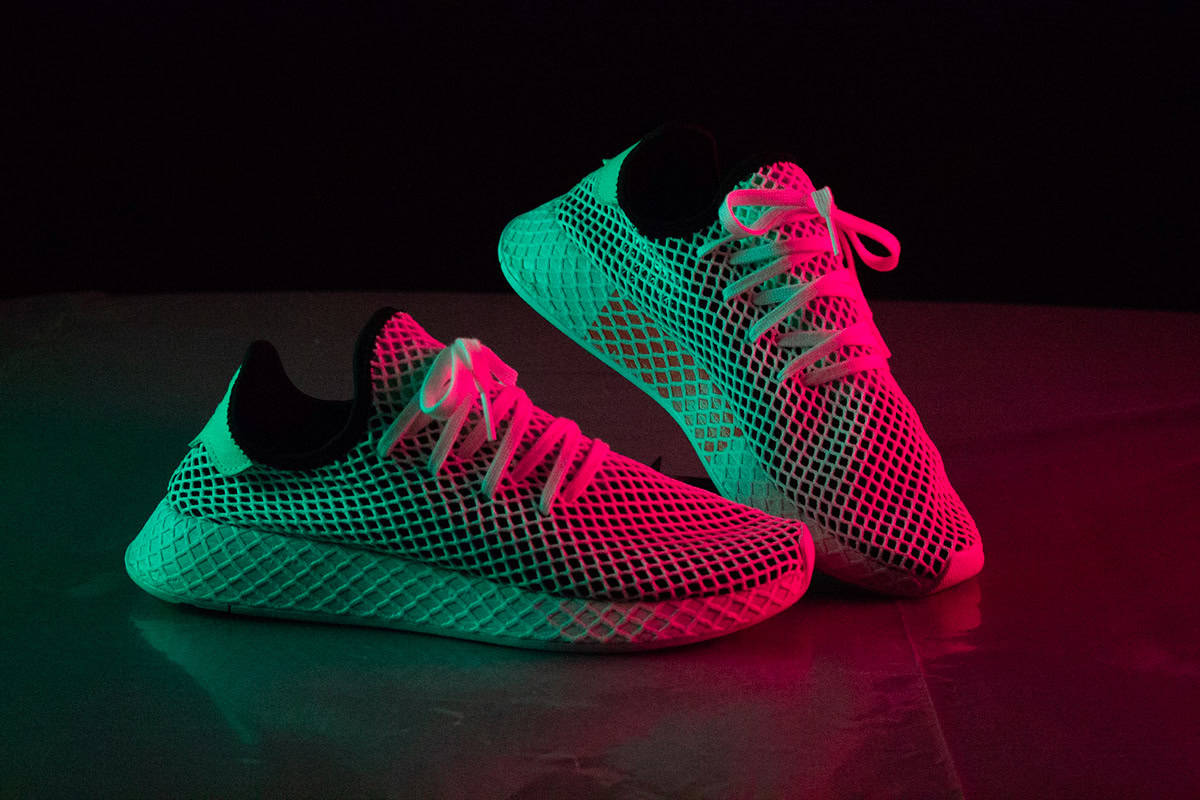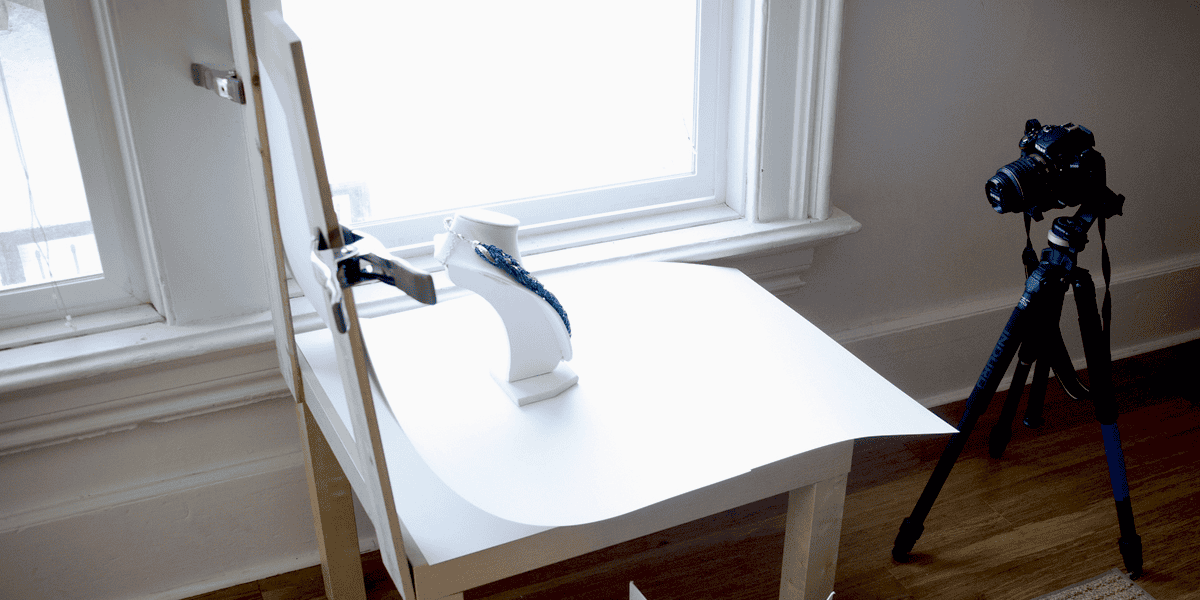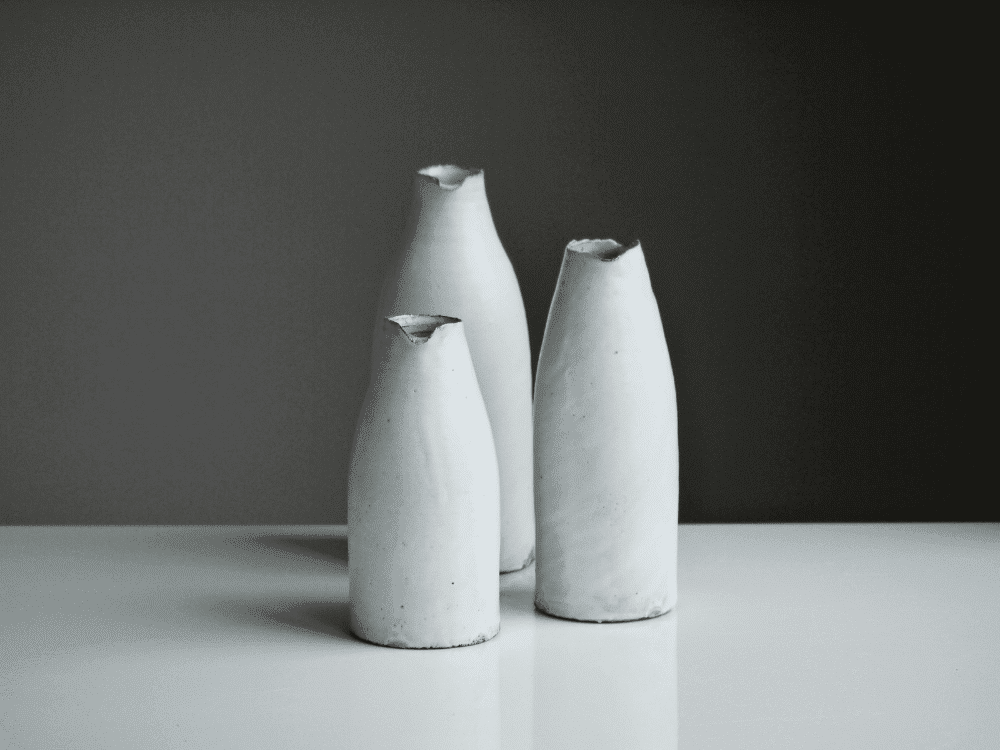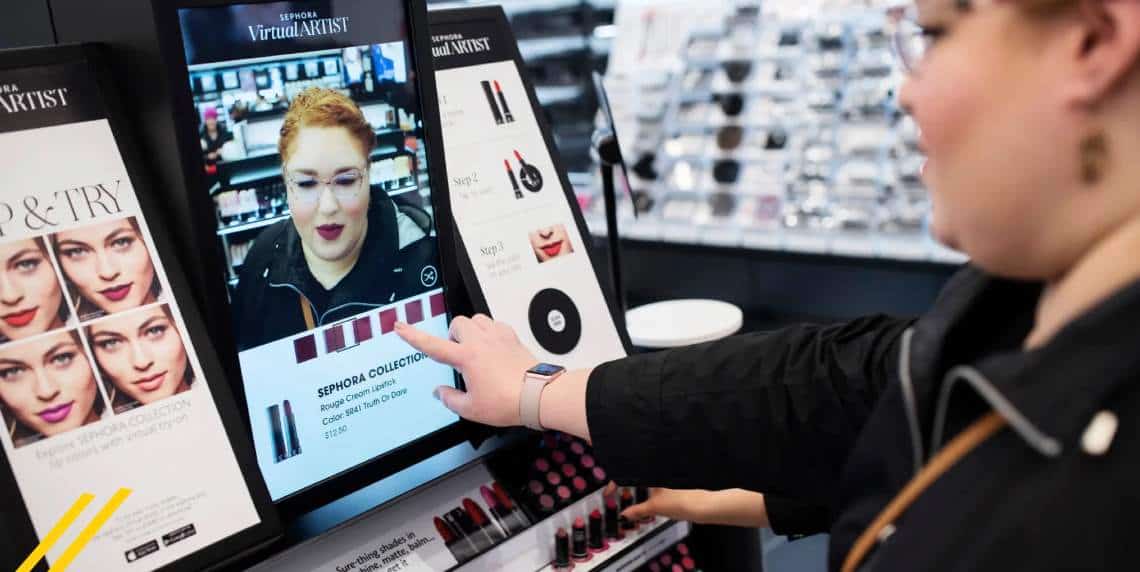What is the first thing potential customers see when searching for a product online? You guessed right: the product image. According to research, up to 75% of online shoppers depend on product images for purchase choices, highlighting the importance of professional product photography.
So, you can transform your image quality and product appearance by using a product photography techniques. This transformed visual appearance is a bait that attracts potential clients to click on your eCommerce site, potentially leading to more sales.
This article is a guide to product photography and will cover the following:
- Importance of product photography
- Tips for professional product photography
- Leveraging technology in product photography
Let’s dive in!
Table of Contents
Key Takeaways
Exploring untapped AI product photography techniques can give your business a competitive edge in the digital marketplace. Here are some key takeaways and tips on incorporating them without significant upfront investment.
- HDR photography: Enhances the detail and color of your product, making it look more appealing to customers.
- Colored lighting effects: Can alter mood and perception, making products stand out.
- Natural lighting variations: Utilizes the beauty and authenticity of natural light for softer, more genuine product images.
- Shadow play: Creates drama and intrigue that uniquely highlights the product’s features.
- Interactive imagery (360-degree views): Boosts engagement by allowing customers to view products from every angle.
- Augmented reality (AR): Offers an immersive experience, letting customers visualize products in their own space.
- CGI and 3D modeling: Provides limitless creative possibilities and cost-effective alternatives to traditional photography.
Untapped Techniques in Product Photography
Product images are versatile assets used across various marketing channels, including social media, email campaigns, and online advertisements. In addition, high-quality images can enhance the effectiveness of these campaigns, leading to increased visibility and sales.
eCommerce and digital marketing strategies are a moving train fueled by technological advancements and rapid changes in consumer behavior. So, to stay ahead of the competition, look beyond basic product photography ideas and techniques.
Instead, let’s explore advanced methods to improve customers’ online shopping experience. Here are some of them.
Texture and material highlighting
When you take product shots, highlighting texture and material helps convey the quality of the product, offering potential customers a tactile, visual experience. When consumers can almost “feel” the product through their screens, it builds confidence in their purchase decision.
This reduces the amount of hesitation that they might encounter while shopping online. Here are some techniques to achieve texture and material highlighting.
Macro photography

This technique involves taking close-up shots, focusing on the texture and intricacies of the product material. It’s about making the product images look larger than they are in real life, which can be a powerful way to showcase the details of your product. A professional product photographer will use a macro lens to create this lifestyle photo to achieve this.
This is because macro lenses shoot at a 1:1 ratio while most lenses shoot at 1:2.8. This technique is handy for products with intricate details that need to be highlighted.
Controlled lighting
Use artificial light to cast shadows or highlights that accentuate the texture. To ensure your photos are properly exposed, check the exposure setting of your camera. Then, use the auto-exposure feature to control the light automatically.
This helps keep things simple, especially if you are new to product photography.
High definition
Your camera settings could make or mar your product photos. Ensuring that your images are of high resolution to capture the minute details of the product’s surface.
Interactive imagery

For interactive imagery, you take a 360-degree image that allows your customers to interact with the product by rotating and examining it from multiple angles, closely mimicking an in-store experience. This 360-degree view improves the quality of your product photos, reducing customers’ doubts about the product’s appearance.
Additionally, interactive imagery helps keep potential buyers on the product page longer, increasing the likelihood of conversion. To implement 360-degree photography, your product photography setup must include a 360-degree camera or a turntable to capture the entire product.
Also, software tools like Welpix merge product photos for an interactive viewing experience.
Integration with AR (augmented reality)

Augmented reality (AR) personalizes the shopping experience, allowing customers to see how products fit into their lives and make more informed purchasing decisions. It gives a realistic preview of the product in the customer’s environment, which helps set the right expectations and reduce dissatisfaction and returns.
Using AR in your product photos business gives customers a virtual “try before you buy” experience. This crucial opportunity helps them finalize their purchase decision, especially for furniture, home decor, and fashion.
Use lighting creatively
Lighting is one of the most potent tools in product photography because it can completely alter the appearance and perception of a product, evoke emotions, and create a mood that resonates with the target audience. Let’s explore ways lighting can be used to create high-quality photos in commercial photography.
Colored lighting effects

Different colors evoke different emotions. For instance, blue can evoke feelings of trust and security, while red can increase energy levels and urgency. By using colored lights, you can influence how consumers feel about a product.
As a professional product photographer, you can use colored lighting to align with your brand’s identity or campaign theme, reinforcing brand recognition and cohesion across product photos. Specific colors can accentuate or downplay a product’s unique features, drawing attention to its strengths or unique selling points.
Here are some techniques that can be employed for colored lighting effects.
- Gels and filters: Positively affect the lighting of a product by applying colored gels or filters over lights to alter the hue and intensity of the light hitting it.
- LED lights: Leveraging LED lights with adjustable color settings to easily switch between different looks and moods.
- Post-production: This involves enhancing or subtly altering colors using photo editing software like Adobe Photoshop to achieve the desired effect.
Natural lighting variations

Natural light gives your marketing materials a softness and warmth that is often challenging to replicate with artificial lighting. It gives a different feel and is ideal for creating a natural, authentic look.
However, the quality of natural light changes throughout the day. The golden hours (shortly after sunrise or before sunset) offer warm, soft lighting, while midday light is brighter and more direct. It is essential to use indirect natural light to avoid harsh shadows, photo backgrounds, and highlights, and this can be achieved by shooting near a window or in a shaded area outdoors.
Here are some techniques that you can employ to help you with natural lighting.
- Reflectors: Use reflectors to bounce natural light onto the product, filling in shadows and controlling contrast.
- Diffusers: Soften direct sunlight with diffusers to create a gentle, even light across the product.
- Positioning: Experiment with the product’s position relative to the light source to find the most flattering angles and shadows.
- Adjust shutter speed: Shutter speed is how fast or slow the camera shutter closes. A fast shutter speed limits the light the camera takes in, and a slower shutter speed gives the professional photographer a longer exposure. By adjusting your shutter speed, you can control how much light gets into your camera.
Shadow play

Shadows can add depth and drama to product images, creating a sense of mystery or sophistication. They help set the mood, and well-placed shadows can introduce visual interest and texture, making the product more engaging to viewers.
Finally, the direction and intensity of shadows in lifestyle photos can be manipulated during photo editing to emphasize certain product features and convey a particular style or mood. Techniques for shadow play include the following.
- Hard light: Use complex light sources to create defined shadows with sharp edges in all your images.
- Shape and form: Position lights to cast shadows that complement the product’s shape and form, enhancing its three-dimensional appearance.
- Creative objects: Introduce objects into the lighting setup to create patterned or shaped shadows, adding a unique and creative element to the image.
Composition and setting
Composition and setting are two critical factors for successful product photography. In simple terms, composition refers to how the various elements within the frame are arranged and organized to create professional photos.
On the other hand, setting refers to the environment or background in which the product is placed. Here are some concepts that make up the composition and setting in product photography.
Dynamic compositions
Product photographers are increasingly experimenting with dynamic compositions that defy traditional rules to create eye-catching images for eCommerce websites. This approach often involves different angles, white background images, and the creative use of negative space to draw the viewer’s eye directly to the product.
Real-world contexts
Integrating product photographs into real-world contexts helps boost their relatability and lifestyle appeal. This method shows how the product can be used and allows potential customers to imagine the product in their own lives.
Doing so can strengthen emotional connections with your audience, encouraging a more profound sense of desire and urgency to purchase.
Minimalist staging
This concept, known for its simple and uncluttered setups, directs your viewer’s attention to your product and its features. This approach relies on the principle that less is more, and by eliminating distractions, the product’s design, quality, and unique selling points become the focal points of the image.
To create this effect in eCommerce photography, professional photographers shoot product photos on a white background because it takes away distractions and points viewers’ attention to the product itself and their versatility across eCommerce platforms.
Read also: 13 Free Marketing Tools to Create Awesome B2C Content
Leveraging Technology in Product Photography
Technology is crucial in pushing the boundaries of how your products are displayed and experienced online. Some of the most popular technological advancements transforming product photography are high-dynamic range (HDR) photography, computer-generated imagery (CGI), and 3D modeling.
Let’s delve into how these technologies are revolutionizing product displays.
High-dynamic-range (HDR) photography
HDR is an acronym for high dynamic range, which means the range of dark and light tones in your photos. In the past, this process involved taking several shots of the same scene at different exposure levels and combining them into a single image to showcase the best detail from each exposure.
However, with technical advancements, professional cameras have a built-in HDR setting. This means the professional camera will take detailed shots with different light levels and only give you a final shot of all three — saving you from the hard work of combining all three.
Benefits of HDR for product photography
Here are some of the benefits of using HDR for your product photography.
Enhanced detail
HDR photography reveals the finest details in a product’s brightest and darkest areas, providing a more comprehensive view of its features. This helps viewers and customers get even the tiniest detail from your product.
Richer colours
This technique can enhance the vibrancy and depth of colors. By using richer colors, you can improve the outlook of your product, making the product images that people see on your website or online store more appealing and realistic.
Improved visual appeal
By capturing and combining exposures, HDR photography produces images that closely mirror how the human eye perceives light and color, resulting in highly appealing and engaging photos.
Techniques for HDR in product photography
Here are some of the HDR techniques that can be employed in product photography:
- Bracketing involves taking multiple shots of the product at varying exposure levels (typically underexposed, correctly exposed, and overexposed) and then combining them.
- Software processing utilizes HDR software or editing tools to merge the images, adjusting the final image to ensure it looks natural and not overly processed.
CGI and 3D modeling
Computer-generated imagery (CGI) and 3D modeling involve creating photo-realistic images and animations of products using computer software. This technology allows for the creation of detailed, accurate representations of products that can be viewed from any angle or in any setting.
Advantages of CGI and 3D modeling in product photography
CGI and 3D modeling are at the forefront of a digital revolution in product displays, and here are some of the benefits to gain from using 3D and CGI.
Unlimited creative potential
CGI and 3D modeling open up endless possibilities for showcasing products in imaginative and visually stunning ways that might be difficult or impossible to achieve with traditional photography.
Cost-effective
Once a 3D model of a product is created, it can be used to generate multiple images without the additional cost of physical photoshoots, making it a cost-effective solution for businesses.
Interactive displays
CGI and 3D modeling enable you to create interactive product visualizations, such as 360-degree views and virtual reality experiences, enhancing customer engagement and understanding of the product.
100% customization
With CGI, a product’s image can be fully customized. Companies try different colors, textures, and lighting effects until they achieve the desired results.
Implementing CGI and 3D modeling
It continues beyond the stage of understanding the concept of computer-generated images and 3D. You must know how to implement aspects of the idea into your work. Here are some key things to note.
- Professional software: Utilizing professional 3D modeling and rendering software to create detailed and accurate models of products.
- Expertise: Employing skilled 3D artists and photographers who translate the physical product into a digital masterpiece.
- Integration with eCommerce: Seamlessly integrating CGI images and interactive models into eCommerce platforms to provide an immersive online shopping experience.
Together, these technologies are setting new standards in how products are presented online, enhancing the visual shopping experience and ultimately driving sales.
Practical Product Photography Examples and Case Studies
A good number of small businesses around the globe employ different techniques of product photography in their operations. Here are a few examples.
Foster + Partners
Foster + Paris is a British architectural firm that uses CGI to create realistic visualizations of its proposed buildings. This lets clients get a clear idea of how the finished project will look, leading to better communication, fewer revisions, and potentially faster project approvals.
Impact on customer engagement and sales
- Enhanced communication: CGI allows clients of Foster + Partners to visualize proposed buildings realistically, leading to better communication, as clients can clearly understand how the finished project will look.
- Reduced revisions: By providing realistic visualizations, CGI can lead to fewer revisions as clients understand the proposed buildings more clearly.
- Faster project approvals: The ability to visualize proposed buildings realistically can contribute to faster project approvals, positively impact project timelines, and ultimately increase sales for the firm.
Sephora
Sephora is a multinational chain of beauty stores offering cosmetics, skincare, and fragrances. Its revenue in 2020 was approximately €4.3 billion. Sephora’s “Virtual Artist” tool allows shoppers to test out shades of beauty products without leaving the comfort of their homes, enhancing the online shopping experience and driving purchase decisions.
Impact on customer engagement and sales
- Enhanced online shopping experience: The “Virtual Artist” tool enhances the online shopping experience by allowing shoppers to test out shades of beauty products from the comfort of their homes.
- Driving purchase decisions: By offering a tool that allows customers to try out beauty products virtually, Sephora’s “Virtual Artist” can drive purchase decisions, ultimately leading to increased sales and customer engagement.
Zaha hadid architects
Zaha Hadid is an Iraqi-born British architect known for her futuristic and organic designs. They use CGI to develop and communicate their innovative building concepts. AR tours allow potential residents to explore their future apartments’ interiors virtually before construction.
Impact on customer engagement and sales
- Improved visualization: CGI allows Zaha Hadid architects to develop and communicate their innovative building concepts visually compellingly, potentially engaging potential clients and customers.
- Future potential: While the direct impact on sales may take time to be quantifiable, the ability to offer AR tours could allow potential residents to virtually explore the interiors of their future apartments before construction, potentially influencing purchasing decisions and customer engagement.
Tips for incorporation without significant upfront investment
Adding these techniques without substantial upfront investment requires careful planning and putting resources in place. However, here are some tips to help you navigate the process easily.
Utilize free tools and open-source software
You can explore free software options for HDR photography and basic CGI/3D modeling to achieve professional results with some learning.
Leverage smartphone capabilities
Some people delve into product photography using phones. Modern smartphones have advanced camera features that allow you to experiment with HDR, colored lighting, and basic AR functionalities for product photography.
DIY lighting and setup
Instead of burning holes in your wallet, a better idea will be to invest in expensive lighting equipment; you can use DIY solutions. You can also use YouTube and photography blogs for creative lighting setups using everyday items.
Free AR and 3D modeling platforms
Some platforms allow you to try their services through demos, free versions, and trials. This allows small businesses to create basic 3D models or AR experiences.
Checking out the platforms through the free version and trails is a great way to understand the platform’s function before committing to its entire package.
Collaborate with emerging artists or technologists
You can partner with local colleges, universities, or online communities to find budding photographers, CGI artists, or AR developers looking for experience or portfolio-building opportunities.
Start small and scale gradually
You can start by applying these product photo techniques to your best-selling or flagship products. Analyze their impact on sales and customer engagement, then gradually extend to other products based on results.
Conclusion
As we’ve discussed, exploring new product photography techniques—ranging from HDR and colored lighting effects to the more advanced CGI, 3D modeling, and augmented reality—can enhance the visual appeal of your products, influence consumer perception, and, ultimately, drive sales and brand loyalty.
These techniques offer more than just a way to showcase products: they provide a means to tell a story, evoke emotions, and create immersive experiences that resonate with consumers. By leveraging such techniques, businesses can differentiate themselves in a crowded market, build a more substantial online presence, and foster a deeper connection with their audience.
Do not be afraid to start small. Use analytics to measure effectiveness and ensure that you get feedback directly from your customers on their preferences and how the product’s visuals affect their shopping experience.
Frequently Asked Questions
What is the most budget-friendly way to improve product photography?
Using natural light is the most budget-friendly way to improve your product photography. It does not require additional equipment. Enhancing photos with free or low-cost editing software can also significantly improve the quality of your image. You can also set up DIY backgrounds and reflectors using everyday items.
How can small businesses use AR in product photography?
Small businesses can use AR in product photography by creating different virtual try-on features for accessories or visualizing how furniture would look in a customer’s space. They can utilize platforms offering low-quality AR services or free trials to integrate AR experiences into their online stores, increasing customer engagement and decision-making.
What are some easy ways to use HDR in product photography?
In product photography, you can easily use HDR mode, which is automated and available on most smartphones. For more control, you can take multiple photos of your product at different exposures and use free HDR software to blend them into a single image. This will give you details in highlights and shadows, making the product appear appealing.
How do I choose the right background for impactful product photos?
You can select a background that contrasts with your product but does not overshadow it, ensuring that the product remains your focal point. Neutral colors like light grey or white are generally flattering and reduce distractions. For lifestyle shots, a background that resonates with your brand aesthetics and the product’s intended use will be fine.
Can CGI replace traditional photography for eCommerce products?
In some cases, CGI can replace traditional photography for eCommerce store products, especially for items that are yet to be manufactured or can not be easily photographed. CGI allows for the creation of photo-realistic images that can be manipulated in ways that traditional photography cannot.
The choice, however, depends on the eCommerce platform’s specific needs, budget, and goals.



